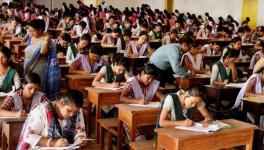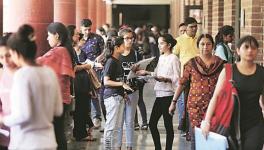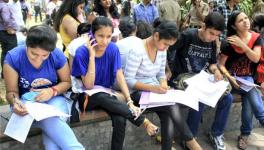Budget 2024-25: Insufficient Allocation for Education Thwarts NEP Goals

Representational Image. Image Courtesy: Flickr
The Union Budget 2024-25 emphasises the theme of "Next Generation Reforms" and highlights four key groups: Youth (yuva), Women (mahilayen), Farmers (annadata), and the Poor (garib). It is crucial to incorporate an analysis of the education budget when deliberating on reforms for the next generation.
The estimated budget for education is ₹1,25,638 crore for 2024-25. The Finance Minister has projected India's nominal GDP (gross domestic product) to reach ₹326.4 lakh crore in 2024-25, implying that only 0.38% of GDP will be allocated to education by the Central government.
Education falls under the Concurrent List of Indian Constitution, indicating that both the Central government and state governments share the responsibility for creating and implementing education policies. Previously managed solely by state governments, this shift occurred due to the 42nd Amendment to the Indian Constitution in 1976, which transitioned education to the Concurrent List.
Public education spending is crucial for long-term national economic growth and social stability, as it enhances workforce productivity, creativity, and competitiveness while promoting fairness and reducing poverty and inequality. Investing in education fosters a cohesive community with better health outcomes, lower crime rates, and increased civic participation.
The 1990 Human Development Report (HDR) supports reallocating resources to prioritise education and health, emphasising that developing nations can and should expand their budgets for these essential sectors to foster human development and societal well-being.
The NEP 2020 document underscores the importance of allocating 6% of GDP to education, also recommended by the Kothari Commission. However, both the Central and state governments currently spend less than 3% of GDP on education. Furthermore, there has been no notable increase in education spending observed so far.
According to the Economic Survey 2023-24, the share of social expenditure in GDP increased from 6.7% in 2017-18 to 7.8% in 2023-24 (BE). However, the Education Expenditure (EE) to GDP ratio remained unchanged, slightly decreasing from 2.8% to 2.7%. Additionally, the share of EE in total expenditure and social services has declined. In total expenditure, EE's share dropped from 10.7% in 2017-18 to 9.2% in 2023-24. Similarly, its share in social expenditure decreased from 42.4% to 35.3%, a decline of 7.1 percentage points.
In this budget, the Department of Higher Education received an allocation of ₹47,619.77 crore, marking an increase of ₹3,525.15 crore (7.99%) compared with the previous year's budget estimate. However, with an inflation rate of 4.5% projected by the Reserve Bank of India, the real growth rate is only 3.49%. This allocation is also 16.81% lower than the revised estimate of ₹57,244.48 crore for 2023-24. Capital expenditure showed an absolute decline from ₹12.52 crores to ₹11.06 crore.
Similarly, the budget for school education shows no significant rise, with an allocation of ₹73,008.10 crore for 2024-25, representing a 6.11% increase (or 1.61% in real terms) from the 2023-24 budget estimate and a mere 0.8% growth compared with the revised estimate for 2023-24.
The budget allocation for the Ministry of Education is ₹1.20 lakh crore in 2024-25, reflecting a reduction of 7.6% compared with the revised estimate of 2023-24, is not conducive to achieving the goals of the NEP (National Education Policy). On one hand, the government is keen on implementing the NEP nationwide, but on the other hand, this decreased budget allocation undermines the efforts needed for its successful implementation.
Samgra Shiksha (SS) was formulated with the comprehensive objective of enhancing school effectiveness, evaluated in terms of equitable opportunities for education and fair learning outcomes. It integrates the three former schemes: Sarva Shiksha Abhiyan (SSA), Rashtriya Madhyamik Shiksha Abhiyan (RMSA), and Teacher Education (TE). Allocation for it increases by just ₹146.53 crore compared to the budget estimate of 2023-24. Moreover, the revised estimate of SS in 2023-24 declined by almost ₹4,450 crore.
The budgetary allocation for Skill India has increased by 54.99%, which is a positive development. However, it is hoped that this allocation will not be revised downward by 23.92%, as it was in the previous year.
To realise the NEP's aims of youth preparation, skill development, critical thinking, and inclusivity, significant investment must be committed to the education sector. Without enough financial resources, these critical objectives will be unmet, weakening attempts to build a skilled, egalitarian, and progressive society.
The writer is Assistant Professor, Department of Economics, St. Xavier’s College, Ahmedabad, Gujarat. The views are personal.
Get the latest reports & analysis with people's perspective on Protests, movements & deep analytical videos, discussions of the current affairs in your Telegram app. Subscribe to NewsClick's Telegram channel & get Real-Time updates on stories, as they get published on our website.
























